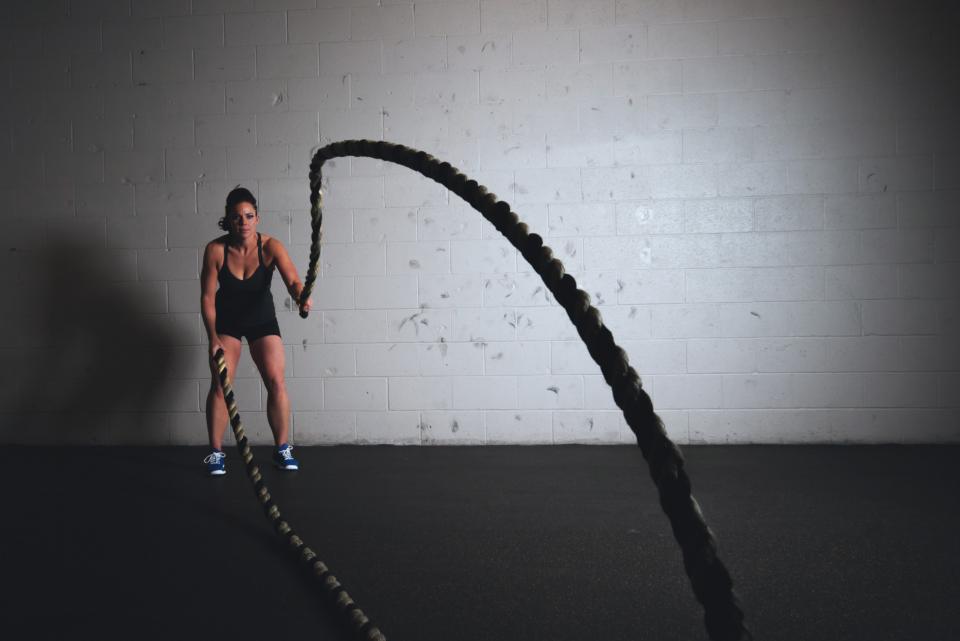With the 2017 new year approaching, there are sure to be a few new year resolutions. The beginning of the year is a very popular time to start a new exercise program. This however, is a time where we see many many exercise related injuries due to inappropriate planning and execution of our new routines. Hopefully we can give you a few tips, to jump start your exercise in 2017, all while staying healthy and injury- free.

When starting new exercise programs, three things should come to mind: frequency, duration, and intensity. There should be consideration of each of these qualities of exercise and we should be mindful of how they are implemented, and increased throughout our programming. We will discuss what each of these qualities are and how to appropriately increase them, to avoid increasing our risk of injury. We will teach you the “RAMP” method, that can be utilized for all of the exercise qualities.
A “RAMP” protocol, is a gradual increase in any of the qualities of exercise (frequency, duration, and intensity). We should increase frequency, then duration, and lastly intensity. WE will discuss what each of these mean next.
Frequency- this is how often we are exercising. How many days of the week do we perform physical activity. For health benefits we should be exercising on most days of the week. However, if we are just beginning a new routine, it would be ill advised to begin exercising this much. We want to give our bodies time to respond and adapt to the stress that comes with exercise. There is an increase in risk of injury by not allowing our body appropriate rest. A good goal is to begin at 2-3 days per week. These days should be separated with at least one rest day between. If we do not experience any adverse symptoms (anything beyond typical soreness related to exercise), then we can safely increase our frequency. Add 1 day every 2 weeks, until we are at our desired days of exercise (most days of the week).
Duration- this is the length of our exercise bout. For health benefits we should be exercising at least 30 minutes a day. An old school of thought use to be, this needed to be continuous exercise lasting 30 minutes. Recent research has shown that this exercise does not need to be continuous to reek benefits. For example, 3 bouts of 10 minutes of exercise may be equally as beneficial as 1 bout of 30 minutes. This will provide you with options on how to begin a routine. Once again, we should take a RAMP approach (gradual increase) to increasing our duration to minimize risk of injury. A good rule of thumb is to increase duration 10-20% every 2 weeks. For example if we begin at 20 minute bouts, we will increase to approximately 25 minutes after 2 weeks (using 20% increase).

Intensity- this is how hard we are working or how much energy we are using to complete our task. The intensity at which you exercise is an important factor, and can determine many of the physiological effects that result from exercise (one of which being what you burn for fuel, fat or carbs). There are three intensity levels we can work at- light (30-50%), moderate (50-70%), or high/vigorous (above 70%). Here are two simple ways to gauge our exercise intensity, heart rate and rate of perceived exertion or RPE. With the heart rate measurement we first need to obtain our maximum heart rate. A good way to estimate this is by subtracting our age from 220. For example, for a 30 year-old, the estimated maximum heart rate would be (220-30=) 190 beats per minute. SO when using heart rate as our measure, you will determine the intensity by the measuring what your heart rate is during exercise. Using the same 30 year old, exercising at a moderate intensity level his heart rate should be between 90-126 beats per minute. The other way to gauge intensity is using RPE, which there are multiple scales that can be found online. We believe the 1-10 scale is easiest to use, 1 being very light activity and 10 being maximal effort. Exercising at a moderate intensity levels most days of the week is ideal for health benefits.

Keeping these simple things in mind when designing your new program, may be the keys to keeping you pain free. Injuries can derail your new goals and keep you from the gym for weeks at a time. Be smart about how you go in to 2017, and your new exercise routine.
Program tips
-Do not drastically increase any of the three modes (every 2 weeks adjust one of the three). Use the RAMP protocol, of gradual increases.
-Adjust frequency, duration, then intensity. (in this order, for safe transitions)
-If there is an increase in intensity, there will be more rest required.
-Longer exercises (higher duration) can ideally be coupled with lower intensity. On the flip side- higher intensity exercises, can be of shorter duration.
-Have FUN. The most important aspect of attaining a sustainable exercise plan is finding something you like. Find something that increases your heart rate and allows you to break a sweat.
-KISS- Keep It Simple… Silly.
If you need help with any exercise program design, feel free to ask us. If you are experiencing any pain, let us help you, so that you can be sure to kick off 2017 with your best foot forward.
Find us on Facebook, Instagram, and Google.
Call to schedule an appointment at either our Sugar Land or Clear Lake office, 832-886-4054


